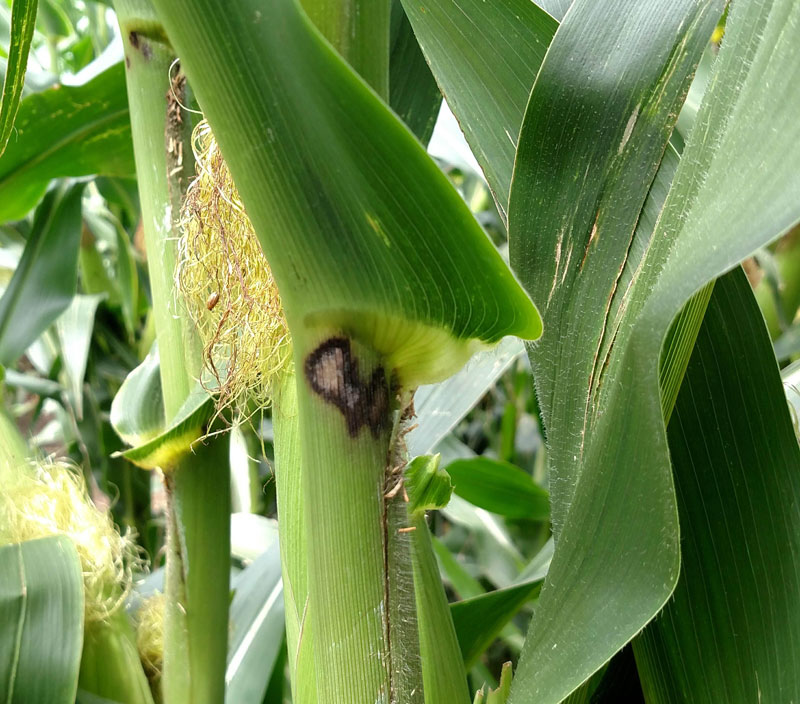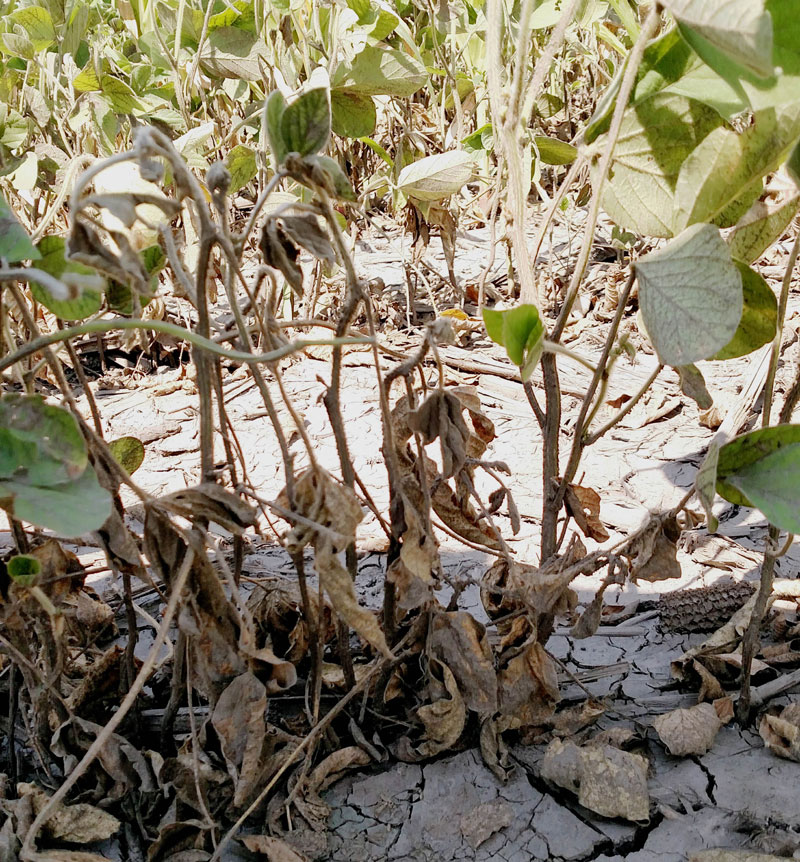Have you ever seen something that was actually something else? Or, rather, have you ever thought you saw something, but it actually was something else? Not necessarily as extreme as the whole Baby-Ruth-in-the-swimming-pool drama (what movie was that anyway?), but in life, we seem to come upon things, or people, or events, or places that seem to be what they’re not. Early in my science classes, I learned about the “false advertisers” of the caterpillars that have spots to pretend to be snakes, the viceroy butterflies who mimic the markings of the poisonous monarch butterflies, or the stick insects that look like twigs and leaves that even look like they sway in the wind!
I have learned that not everything is what it seems. That is why, in agronomy and in the field, I have to look twice to identify those imposters.
Probably the most common example of mistaken identity in corn is misidentification of purple leaf sheath as physoderma brown spot. Later in the growing season, as the stalk widens, the leaf sheath tends to collect particles. When moisture and heat react with these leftover dust, pollen, and “trash” particles, they discolor the leaf sheath, leaving a benign purplish, blackish spot on the top where the leaf is connected. Often, this is misidentified as physoderma brown spot, a fungus which can develop into a stalk rot. Purple leaf sheath isn’t a disease—it’s just a funny looking spot similar to a mole on your arm.

Sometimes, when a new disease is found in the area, people begin to “see” it everywhere. Recently, bacterial leaf streak was identified in corn. This is a bacteria that causes wavy leaf lesions that are yellow in color when backlit. It can look like other diseases that cause leaf lesions, especially grey leaf spot. Unfortunately, grey leaf spot is a fungus and controlled by fungicides, which will not control bacterial leaf streak. Sometimes corn leaf blotch miner feeding can look like bacterial leaf streak because they feed on the juicy inside of the leaf and leave the outside film. Other times, sun scald or wind damage can look like leaf lesions from a disease.
Another disease that’s new to our area is tar spot. This is one that looks similar to our common or southern rust, but there are slight differences. A rust is called that because it “rubs off” when you scrape at the lesions. Tar spot does not. The spots are usually dark in color, and not the rusty color that common and southern rust start out at, either.

And, last, but certainly not least, was the one that baffled me last year. I was near Pender in a soybean field. This grower had quite a bit of flooding earlier in the year, and had lost some of his field from that damage. The growing season turned into a hot one. This brought quite a bit of disease to the corn, which didn’t surprise me. I expected some disease to show up in his soybeans as well. That is why, when the edges of two of his other fields which were close together showed symptoms of what seemed to be phytopthora, it didn’t alarm me. The patches of droopy, dying plants were just one more thing for this poor guy to have to treat. However, when I went to check on the soil and root system, the roots weren’t brown and rotting like the rest of the plant! This isn’t classic phytopthora at all! My puzzlement was alleviated this winter at a conference when I discovered the clever little soybean gall midge, a new species discovered in the area affecting soybeans. The larvae of this little striped fly burrows into the soybean stem, killing the plant and causing symptoms that look like phytophthora without the root rot. Huh. One more imposter to put on our list and remind us why we always need to keep our eyes peeled and our minds sharp!
